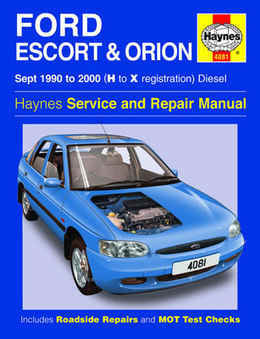1990 Ford Capri Convertible Workshop Manual
Apr 14, 2018 - The 1991-94 Mercury Capri has some idiosyncracies that might lead an. Be able to find parts, or because they don't have the service manual.
You`ve heard the line: You never knew your uncle was a drunk until one day you saw him sober. We suspected some problems when we test drove the base model of the new 1991 Mercury Capri (Cartalk, July 29) with its 1.6-liter, 16-valve, 100- horsepower, 4-cylinder engine, teamed with 5-speed manual. We detected a constant clicking when the clutch pedal was released, a constant clicking when the fan was put on the No. 4, or ``high,`` setting, and a design flaw in positioning a red push button in the handles that releases the convertible`s soft top from the windshield header. Perhaps just problems with the car tested. To be certain, we tried another Capri, the XR2 with a power-boosting turbo added to the 1.6-liter engine. We found no clicking in the clutch.
It had nothing to do with turbo versus non-turbo. The 5-speed in Capri is designed so the car won`t start unless the clutch is depressed even in neutral. The clicking in the previous test car was the sensor that told the engine not to start until the clutch was depressed. Faulty sensor.
One problem solved. Remember all the charges about sudden acceleration in a variety of cars? To ensure that a motorist can`t suddenly accelerate by pressing the gas pedal when he or she thought it was the brake, cars with automatic transmissions have been designed so they won`t start or shift out of ``park`` until the brake is depressed. Depressing the clutch on the Capri acts in much the same way. In the Capri turbo, we turned the fan setting to ``high.`` No clicking. What we found was that the release cycle for the air conditioning freon sensor was out of whack, but only when the fan was in the No.
Ford found that annoyance early and fixed it. Another problem solved. Then there are the release handles and those red buttons in the levers. Unless you have pencils for fingers and no fingernails (and after using the red buttons a few times you`ll have no nails), there`s precious little room to press the button and pull the release handle. The folks at Ford said the buttons were added based on complaints in clinics where consumers were asked to critique prototypes.
Consumers said without the buttons they were afraid someone would reach in and use the convertible release top as a grab handle for easier entry and exit. Consumers reasoned that they`d pull the handle and unintentionally release the top-a major annoyance should it happen. The buttons are 10 times the annoyance of mistaking the release handles for grab handles. The annoyance becomes pain when you pinch your fingers. An easier way to use the release handles has got to be found, so there`s one problem still to be solved.

Make that two. We experienced a new one with the shoulder belt in the XR2. The belt is designed to tighten around the upper torso in the event of hard braking, to keep the occupant from kissing the steering column or w indshield or being tossed around the cabin. In the test car, the belt would suddenly tighten and secure itself when the car merely was traveling over bumps in the road. What started out as an annoyance turned into torture. We have to suspect a sensor at fault, because the same problem didn`t arise in the base model, only the XR2.
Another discomfort is the rear seat. ``It`ll hold a camera case or light luggage,`` said Craig Perry, U.S. Product planning manager for Ford`s Capri project. But the people holding the camera or luggage don`t fit.
So why bother? To go one up on the competition. ``Our consumer research found that those who owned a Miata complained that when the top was down there was no place to put a handbag.

Women had to lock their purse in the trunk,`` Perry said. If the company is catering to women, we asked Perry why Capri has a manual convertible top rather than a power job. ``Money,`` he replied. ``We wante to keep the price down.`` That`s the reason Capri doesn`t have antilock brakes and a four-wheel- drive version is being tested in prototype form but hasn`t been given a production go-ahead. It`s not all grief in a Capri.
1993 Mercury Capri Convertible

There`s a console-mounted headlight switch button so you can leave the retractable lamps open when not in use. That means Snow Belt owners who park outside won`t have to chip away ice or frozen snow to free the headlights. To distinguish the XR2 turbo convertible from the non turbo base model, there`s a hood bulge and a deck-lid spoiler. The XR2 uses larger stabilizer bars to improve ride and handling from the base model. It uses 14-inch tires, but larger 15-inch treads will be offered next year; to make room, fender flares may be used. To further distinguish the XR2 from the base model, there may be a ground-effects package along the rocker panels as well.
The performance difference is, as expected, that the 132-h.p. Turbo is more spirited than the 100-h.p. Yet there is turbo lag, that pause between the time you kick the pedal and the turbo kicks in. For now, the XR2 is available only with 5-speed manual, which should hold down potential sales.
Automatic is offered only on the base model as a $732 option. Ford expects 25 percent of the Capris sold to be turbos, but we suspect that might be high.
The base Capri starts at $12,588, the XR2 turbo at $15,522. Standard equipment includes power brakes and steering, power windows, AM/FM stereo, and cast aluminum wheels. A removable hardtop is a $1,224 option; air conditioning runs $817.